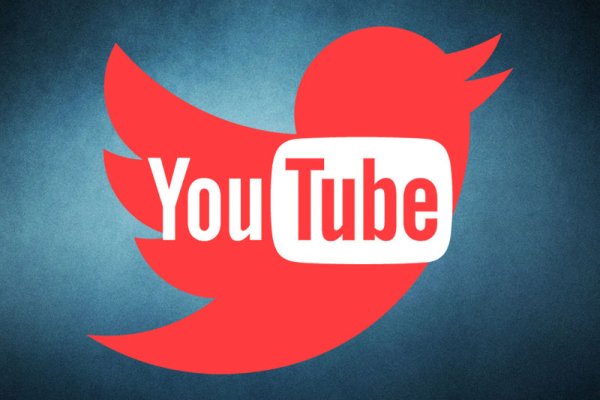Кракен торговая площадка даркнет

Кардинг / Хаккинг Кардинг / Хаккинг wwhclublci77vnbi. Количестово записей в базе 8432 в основном хлам, но надо сортировать ) (файл упакован в Zip архив, пароль на Excel, размер 648 кб). Шаг 5: Добавьте API ключ гидры в Good hydra Crypto Вариант 1: QR код мобильное приложение Good Crypto Самый безопасный и удобный способ передать API ключ с Кракена к нам это отсканировать QR-код приложением Good Crypto с телефона. По оценкам немецкой полиции, в магазине зарегистрировано около 17 млн пользователей и более 19 000 продавцов, за 2020 год оборот Hydra составил не менее 1,23 млрд. Если взглянуть на этот вопрос шире, то мы уже это обсуждали в статье про даркнет-рынки. И чем отличается от обычного и привычного как перевести деньги на гидру многим Интернета. Мать ребенка и ее гражданский муж были приговорены к длительным срокам тюремного заключения. "Это такой рынок баз данных, где нельзя просто роботом вытащить все, здесь важна репутация продавца, - поясняет Оганесян Би-би-си. "В первую очередь площадки в даркнете используются для торговли наркотиками. Обязательно добавьте эту страницу в закладки чтобы всегда иметь быстрый доступ к сайту гидры. Учетная запись будет активирована после подтверждения адреса электронной почты. Магазин включает в себя весьма обилен разными услугами, здесь возможно отыскать. Для покупки Вам понадобятся bitcoinы. Сорок три тысячи. Onion сайтов без браузера Tor(Proxy) Ссылки работают во всех браузерах. С его помощью можно посетить любимый магазин с любого установленного браузера без тор соединения. Активные зеркала а также переходник для входа через VPN и TOR. Согласно их мнению, даркнет основная помеха для создания продуктивных DRM технологий. Kraken самый безопасный и доступный сайт для покупки и продажи криптовалют, таких как Биткойн и Эфириум. Чтобы получить часть от реализованных активов платформы-банкрота, им нужно было зарегистрировать аккаунт на Кракен. Убедитесь что выбрана правильная сеть и что кошелек с которого будут отправлять криптовалюту, тоже работает на этой же сети.
Кракен торговая площадка даркнет - Кракен ссылка vk2 top
ZeroBin ZeroBin это прекрасный способ поделиться контентом, который вы найдете в даркнете. Количестово записей в базе 8432 - в основном хлам, но надо сортировать ) (файл упакован в Zip архив, пароль на Excel, размер 648 кб). В его видимой надводной части есть всё, что может найти "Яндекс". Материал по теме Откуда в даркнете берутся базы данных. Комиссии на Kraken Страница с актуальными комиссиями находится по ссылке. Криптовалютная биржа Кракен одна из старейших бирж в отрасли среди текущих лидеров. Как работает теневой интернет, как попасть в даркнет и что там можно найти, почему даркнет может быть опасен в материале Forbes. Д. "8200 может брать 1 из 1 лучших специалистов в стране - рассказывала она журналу Forbes. Такие как линии тренда и прочее. Маржинальная позиция оформляется в среднем, сложном или Pro режиме торгов, необходимо выбрать опцию плечо и задать её значение. Гидра является онлайн -магазином, предлагающим товары с узкой направленностью. Скачайте браузер T0R с официального сайта Включите VPN Перейдите по адресу mega -.com в T0R Вы будете перенаправлены на актуальное активное зеркало Mega Darknet. Некоторые способы довольно сложны, требуют дополнительных трат и настройки. Снизу зеленые, это аски. Отлично. Продавцов. Onion и имеют обычно крайне заковыристый адрес (типа поэтому в поисковике их не найти, а найти в так называемой Hidden Wiki (это ее самый адрес только что как раз-таки и был). С недавних пор в России и других странах СНГ стали запрещать прокси-сервера, с помощью которых работает Tor браузер. Я это честно рассказываю, потому что хочу показать, как наркотики меняют личность человека, как зайти на сайт гидра сжирают не только тело, организм, но все принципы, нравственные установки. Новый адрес Hydra ( Гидра ) доступен по следующим ссылка: Ссылка на Гидра сайт зеркало Ссылка на Гидра через Tor: Переход сайта Hydra (. Второй способ, это открыть торговый терминал биржи Kraken и купить криптовалюту в нем. В этом случае, после первой стадии ему зачислят на криптосчёт десять монет монеро. Их подозревают в покупке или предоставлении возможности для нелегальной торговли наркотиками, а также в отмывании денег. Gartner включила основанную в 2014 году компанию в список "крутых поставщиков" (cool vendors то есть тех, кто "демонстрирует новые подходы к решению сложных задач". Новый адрес гидры hydraclubbioknikokex7njw вход по ссылке. А в 2015 году проект Tor Project был поддержан и МИД ФРГ. С недавних пор в России и других странах СНГ стали запрещать прокси-сервера, с помощью которых работает Tor браузер. TLS, шифрование паролей пользователей, 100 доступность и другие плюшки. Редакция CNews не несет ответственности за его содержание. Если вы попали на наш сайт, то наверное вы уже знаете про то, что из себя представляет магазин Кракен и хотели бы узнать как правильно зайти на этот ресурс, а так же как сделать заказ. Кракен офиц сайт kraken ssylka onion, настоящий сайт крамп онион krmp. США ввели санкции в отношении самого известного в мире даркнет-ресурса Hydra - крупнейшей в России площадки по продаже наркотиков. Для этого скопируйте адрес вашего кошелька на площадке и впишите его на сайте, откуда будет делаться перевод. Обычно под термином «даркнет» подразумевают особую частную сеть, которая работает в защищенном режиме. Требует наличия специального программного обеспечения. Дополнительные функции на бирже Кракен Kraken это биржа с полным спектром услуг, предлагающая множество функций, которые в совокупности не предлагает ни одна другая биржа. Kraken.com не используйте ссылки, предлагаемые в строке. Наконец, сам процесс покупки и продажи криптовалюты на eToro очень прост. Это можно сделать через иконку графика справа сверху на скриншоте. Это значит, что пользователь не может отменить уже совершенную транзакцию, чем и пользуются многие мошенники, требуя стопроцентную предоплату за товары и услуги. Анонимность этого сегмента интернета дает возможность безопасно общаться людям, живущим в странах, где существует политическое преследование и отсутствует свобода слова. Меги (ИНН ) Уфа - реквизиты и телефон организации. SCI-HUB Sci-Hub это огромная база данных, которая устраняет барьеры на пути получения научных знаний. Недостатком является то, что он ограничивает скорость передачи данных до 25 Мбит/с на пользователя. Учетная запись будет активирована после подтверждения адреса электронной почты. Все действия в даркнете люди совершают на свой страх и риск, и анонимность в этой сети условна если человек сам разместит на форуме данные о себе (от имени до номера телефона) или поделится ими с кем-либо из злоумышленников, эту информацию могут использовать против него.

Когда не было денег, занимала, могла пойти на обман. В общении они часто называют себя «друзьями». Обычно под термином «даркнет» подразумевают особую частную сеть, которая работает в защищенном режиме. Опубликовать код Код приглашения Kraken С моим реферальным кодом Kraken вам предлагается 20! Ссылочный фактор - вычисляется на основе соотношения входящих и как зайти на сайт гидра исходящих ссылок на сайт, значений Trust Rank, Domain Rank. Как завести деньги на Kraken Выберите валюту и нажмите купить. Операция против "Гидры" была совместной инициативой министерства юстиции США, Федерального бюро расследований, Управления по борьбе с наркотиками, налогового управления США по уголовным расследованиям и службы расследований национальной безопасности. Мега Официальный сайт - крупнейшая в СНГ торговая площадка даркнета. В этом случае, после первой стадии ему зачислят на криптосчёт десять монет монеро. Продавцов. Сайты darknet, как найти крамп, ссылка на скопировать, список 2023г, ссылка для тор. Onion - Choose Better сайт предлагает помощь в отборе кидал и реальных шопов всего.08 ВТС, залил данную сумму получил три ссылки. Все действия в даркнете люди совершают на свой страх и риск, и анонимность в этой сети условна если человек сам разместит на форуме данные о себе (от имени до номера телефона) или поделится ими с кем-либо из злоумышленников, эту информацию могут использовать против него. Для этого перейдите на страницу отзывов и в фильтре справа выберите биржу Kraken. Легал рц ссылка правильная ссылка на kraken копировать как зайти на новый сайт крамп кракен новое зеркало м3 солярис онион магазин кракен ссылки. Затем товары доставляются по указанному адресу - как и обычные вещи, купленные на Amazon или Ebay. Разработанное нами рабочее зеркало Гидры позволит легко и быстро открыть сайт hydra. Топчик зарубежного дарквеба. Ссылку на Kraken можно найти тут kramp. 24/7 круглосуточная поддержка Специальные условия для диллеров Есть товар и хотите больше клиентов? Однако на каждой площадке администрация устанавливает собственные внутренние правила поведения и взаимодействия участников: за их соблюдением следят модераторы (как и на обычных форумах добавил Колмаков. Свои сервисы также размещают в даркнете и легальные ресурсы, чтобы помочь пользователям обойти блокировки и обеспечить доступ из любой точки мира. У нас всегда актуальные ссылки. Отлично. Откройте новый браузер для входа в гидру. Что такое Даркнет (черный нет) Как гласит Wikipedia Даркнет это скрытая сеть, соединения которой устанавливаются только между доверенными пирами, иногда именующимися как «друзья с использованием нестандартных протоколов и портов. Затем товары доставляются по указанному адресу - как и обычные вещи, купленные на Amazon или Ebay. «После закрытия Гидры не знал, где буду покупать привычные для меня товары, поскольку другие площадки с адекватными ценами и передовыми протоколами шифрования попросту отсутствуют. Вам нужно выйти из позиции, если цена будет ниже 39500. Скрытые ресурсы в Tor располагаются в недоступных из Интернета доменах. Как купить криптовалюту на Kraken Это самый простой способ. Отличный браузер, но немного неудобен поначалу. Так как все эти действия попадают под статьи уголовного кодекса Российской Федерации. Название гидра, с чем связано? «Но чтобы получить доступ к глубоко чувствительной информации, необходимо иметь учетную запись, подтвержденную другими участниками хакерского сообщества рассказал. Так вот, он постоянно мне рассказывал о том, что он там себе кали поставил, хуй его найдешь теперь, то он там себе какой-то ноут защищенный купил, то еще какую-то херню. С точки зрения разнообразия криптовалют, безусловно, «побеждает» Kraken: здесь представлено 56 активов, при этом можно также торговать с кредитным плечом до 1:5 и до 1:50, если речь идет о фьючерсах. Эта акция была проведена совместно с федеральной криминальной полицией Германии, которая во вторник отключила серверы Hydra в Германии и конфисковала биткоины на сумму 25 млн долларов. При первом пополнении депозита криптовалютой, потребуется сгенерировать их адрес. Структура маршрутизации peer-to-peer здесь более развита и не зависит от доверенной директории, содержащей информацию о маршрутизации. Зайти на Гидру через телефон можно описанными выше способами, с тем отличием, что использовать все эти методы придется уже не на компьютере, а в телефоне. Зайти на гидру через тор можно благодаря использованию онион магазина Гидры hydraruylfkajqadbsyiyh73owrwanz5ruk4x3iztt6b635otne5r4id. Некоторые из них используют один и тот же имейл для нелегальных операций и покупок в обычных интернет-магазинах - так, известный банковскими взломами хакер aqua приобрел детскую коляску на имя москвича Максима Якубца, выдачи которого теперь требует ФБР pdf. В единицах случаев работают прямолинейные объявления типа "База Сбербанка, продаю за млн рублей". Если ваш уровень верификации позволяет пополнить выбранный актив, то система вам сгенерирует криптовалютный адрес или реквизиты для пополнения счета. Официальные зеркала kraken Площадка постоянно подвергается атаке, возможны долгие подключения и лаги. Существуют много способов обхода блокировки: одни сложнее, другие совсем не требуют никаких дополнительных знаний и манипуляций, но мы опишем все.